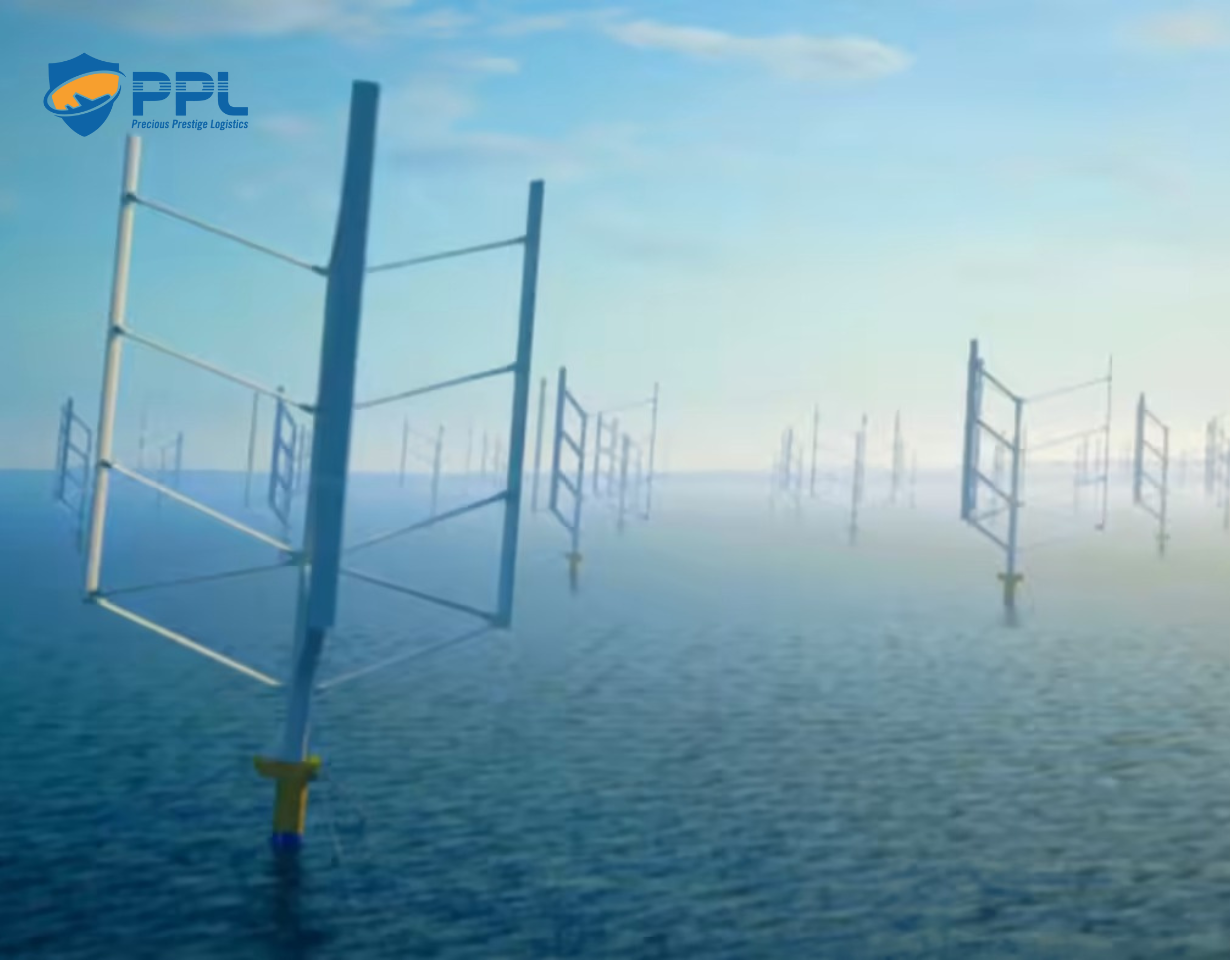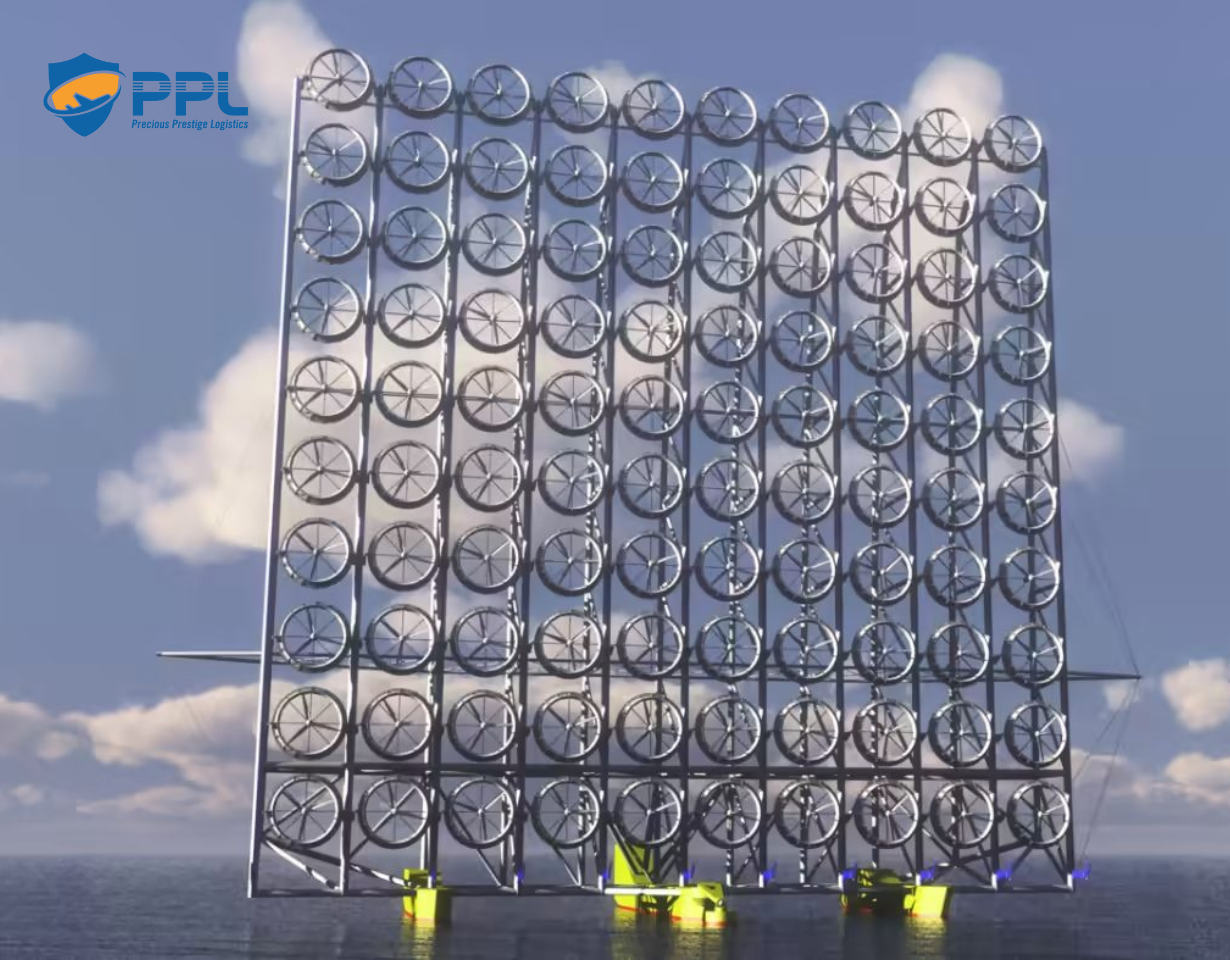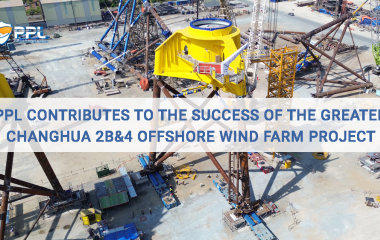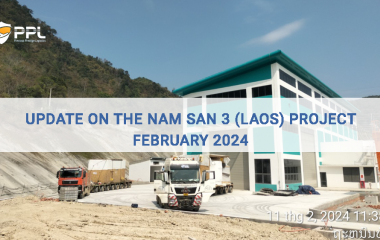Japan races to produce wind power with new technology
A team of researchers from five Japanese companies and one university will begin testing a new generation of floating-axis wind turbines. It is expected that if the model is successful, it will cut the cost of building fixed offshore wind towers by half.
Japanese power and energy corporations are also trying to invest in wind energy at home and abroad. They also work with the university to research new offshore wind, tidal, and ocean current technologies. There is also a proposal to amend the law to bring offshore wind power projects that are located in the territorial sea about 20km from the coast to the exclusive economic zone 370km from the mainland.
 Floating shaft wind turbines require a smaller platform than conventional floating turbines, and are cheaper to install than conventional floating turbines and stationary turbines.
Floating shaft wind turbines require a smaller platform than conventional floating turbines, and are cheaper to install than conventional floating turbines and stationary turbines.Floating shaft wind power
A prototype with an output power of 20kW will be placed offshore to test performance and identify technical problems. A 5MW model will begin field testing around 2026. The goal is to develop a model with an output capacity of about 15MW for commercialization by 2032.
J-Power has been developing floating-axis turbines with Tokyo-based wind power startup Albatross Technology and Osaka University since fiscal 2020. Three other companies – Tokyo Electric Power Co. Holdings, Chubu Electric Power, and shipping company Kawasaki Kisen Kaisha – recently agreed to participate in the project.
Unlike conventional windmill turbines, the floating shaft model acts like a rotating vertical cylinder propelled by three external blades that catch the wind. The floating shaft unit will be anchored to the ocean floor by a chain, allowing offshore wind farms to be built in places with depths of 100 meters or more.
Japan is not suitable for offshore wind turbines that are fixed to foundations placed on the seabed because the country is mainly surrounded by deep coastal waters. According to estimates by the Central Electric Power Industry Research Institute of Japan, more than 40% of Japan's territorial waters are suitable for floating turbines rather than stationary turbines.
Floating wind turbines have been explored as an alternative. However, conventional designs require large and expensive floating platforms.
Floating shaft turbines do not need to be placed on large floating objects. Instead, it uses a small body below the surface that is filled with seawater and holds the entire device upright. The propellers and generators are located close to the surface of the water, helping to maintain balance.
The floating shaft model is also smaller than conventional offshore wind generators, reducing costs because of fewer construction materials. The Japanese researchers claim that the new model has a capacity similar to that of fixed wind turbines.
The location of the wind generator is close to the water, easier to access to repair than the high power poles, sometimes up to 300 meters, so the maintenance cost is very low. Floating shaft turbines can be taken to a wind farm prefabricated and ready to float. This process eliminates the need for a crane, shortening construction time.
A 20kW turbine will use a 10-meter propeller, while a 5-mW turbine will use a 110-meter propeller. The floating turbine can be tilted at an angle of 20% for maximum power generation.
In Europe, Swedish startup SeaTwirl is testing a miniature vertical axis wind turbine. The Japanese side wants to combine Albatross' technical capabilities with corporate and university resources to speed up the development of smaller and more cost-competitive wind generators.
“We want to introduce Japanese-made floating axis wind turbines to domestic and international markets,” said Albatross CEO Hiromichi Akimoto. Technology news site F6S said that Albatross is a technology company specializing in various types of renewable energy from the ocean, including offshore wind turbines, electric turbines from ocean currents, and wave energy converters.
The company plans to increase its use of carbon fiber to manufacture propellers and other components. This is a technological strength of Japan. Turbines for the 20kW Albatross units will be supplied from Fukui, a Fibertech company specializing in the production of fiber-reinforced plastics. Other platforms will be produced by Mirai Ships.
 The matrix system of 100 wind turbines can generate a capacity of 2OMW.
The matrix system of 100 wind turbines can generate a capacity of 2OMW.Racing wind power with Europe and China
Japan initially led the world in floating wind turbines with a demonstration project off the coast of Fukushima Prefecture in 2013. But Japan has not kept pace with rivals in technology development and commercialization. Currently, large-scale projects over 1GW are appearing in Europe.
“To reduce costs, Japan needs to create large-scale floating wind turbine supply chains,” said Chihiro Terasawa, sustainability expert at Mitsubishi Research Institute. We lack the infrastructure to quickly design and build large numbers of floating platforms.”
More and more Japanese enterprises and universities focus on investing in and researching new offshore wind power technologies.
Last week, Tokyo Electric Power Co. Holdings (TEPCO) announced its intention to invest 1 trillion yen ($7 billion) in renewable energy projects by fiscal year 2030, with a new capacity of 6-7MW. "For offshore wind alone, we want to develop 2-3MW including at home and abroad," the president of subsidiary TEPCO Renewable Power told Nikkei Asia.
Kyushu University and Fukuoka-based startup Riamwind have developed a turbine design that looks like a hanging curtain that captures wind energy with 100 small turbines. The actual matrix system is 230 meters high and 280 meters wide with 100 turbines arranged in a 10×10 format. This system can generate 20MW.
Meanwhile, Japan's Kyushu Electric Power will join Singapore's renewable energy firm Bluenergy Solutions to test tidal power generation off Pulau Satumu island, 14km south of Singapore's main island.
Bringing wind power to the exclusive economic zone
To increase the number of offshore sites that can actually be used, new legislation needs to be passed pending technical and cost barriers being resolved.
China currently occupies an overwhelming position in the renewable energy market with 6/10 leading wind turbine manufacturers in the world and 10/10 largest solar panel manufacturers in the world. Reuters says China currently invests nearly 50% of total investment in renewable energy globally.
By the end of 2021, Europe has made offshore wind the main source of renewable energy, with an installed capacity of about 27.8 GW. China alone reached about 26.3 GW. Meanwhile, Japan is close to zero and domestic manufacturers have pulled out of the development and production of wind turbines and other products.
Japan is considering expanding the location of offshore wind farms from within its territorial waters to Japan's exclusive economic zone (EEZ) to restart the wind power industry.
Currently, offshore wind farms are limited to territorial waters about 22km from the coast. Japanese lawmakers proposed extending the limit to an exclusive economic zone located 200 nautical miles from the coast, or about 370km.
Europe already has wind farms in its exclusive economic zones. The Netherlands, Great Britain, and Belgium all have a number of offshore wind turbines fixed to the seabed in their exclusive economic zones. In Asia, South Korea plans to introduce floating wind turbines at about 20 locations.
Related Posts
New Posts
- Vietnam Holiday Announcement
- PPL contributes to the success of the Greater Changhua 2b&4 Offshore Wind Farm Project
- Update on the Nam San 3 (Laos) Project February 2024
- PPL HAPPY NEW YEAR 2024
- LUNA NEW YEAR HOLIDAY 2024 ANNOUNCEMENT
- PPL CONDUCTS A CHARITY PROGRAM OF FREE MEDICAL EXAMINATIONS, CONSULTATIONS, AND MEDICATION DISTRIBUTION IN THAI BINH PROVINCE







Comments